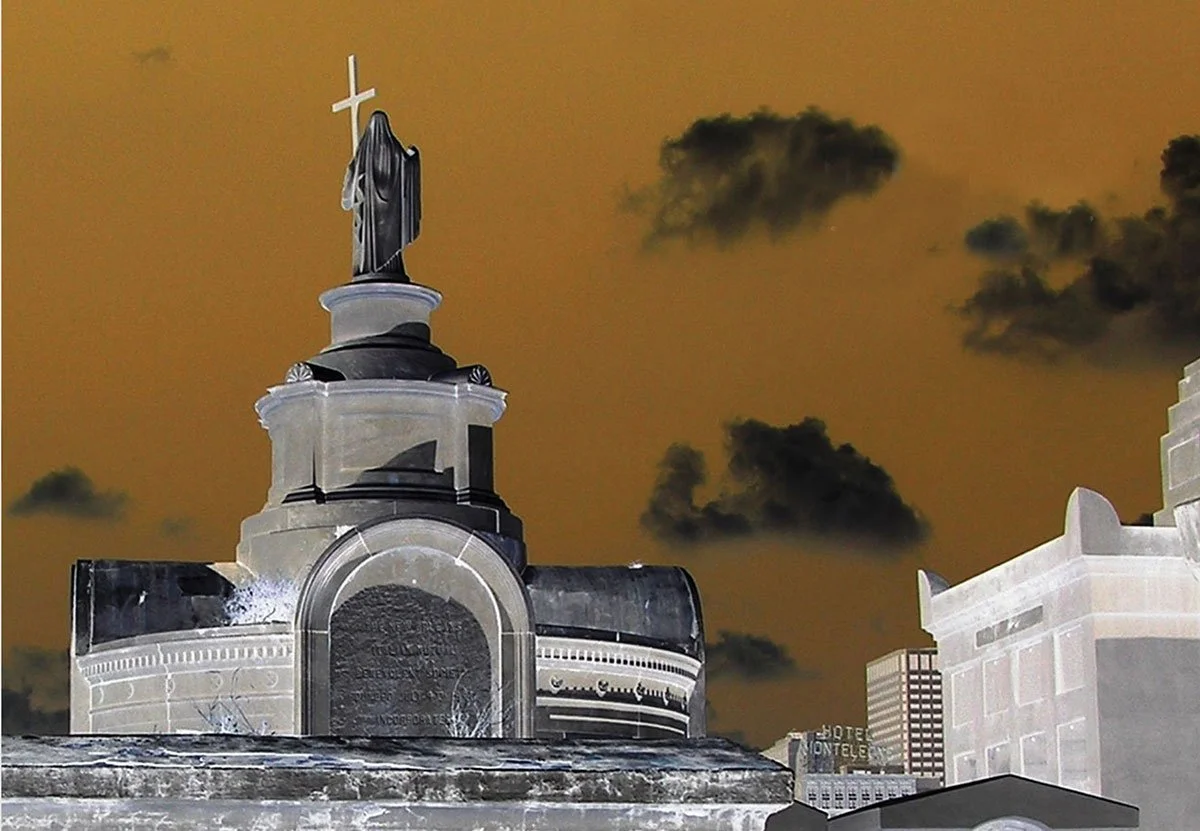Cover to Cover: Yet She Must Die
September 2025– Thomas Uskali
This column is underwritten in part by Karen Hinton & Howard Glaser
Ted-Larry Pebworth’s posthumously published novel is an evocative murder mystery that demonstrates how much a brilliant literary scholar can do in what the rest of us call “spare time.”
Set in 1977, the story centers on the murder of civil rights lawyer Esther Lowry, who had been having an affair with the dean of Tulane Law School. The trail of clues takes readers from the marshy banks of Lake Maurepas to enclaves of Uptown and into a French Quarter so romantic that it makes one wish for time travel.
The title comes from Othello’s Act Five soliloquy prior to Desdemona’s murder. Jealousy and twisted logic lead him to utter, “Yet she must die, else she’ll betray more men,” just before he strangles her. Esther Lowry is found in her lover’s driveway, choked with a scarf behind her car’s steering wheel.
Tulane graduate student and amateur sleuth Wat Thorne feels drawn to make sense of what he sees as a rush to judgment. The chief murder suspect is Tulane’s hard-nosed law school dean, whose family seems to have known about his affair with Esther.
Order through your favorite indie bookstore or on Amazon.
But for Wat, the details of time and circumstances don’t add up, so he pursues his own investigation. Wat was raised in the same north Louisiana town as Esther, and he admires how she pursued civil rights work despite being raised by a racist fundamentalist preacher.
Wat is a little enigmatic, quick-witted and charming. He has been making slow progress on his dissertation (a joke within the department), largely because he enjoys teaching undergraduates. That’s how he meets Nick, a police officer in Wat’s literature class who has inside information about the murder case. Wat and Nick’s teamwork as they work on the case complements Wat’s relationship with Willie, his long-time female friend and confidante.
Supporting characters feel like they have lives beyond their own scenes; Wat’s academic colleagues juggle teaching responsibilities with a hefty dose of New Orleans socializing. This includes Episcopal chaplains who host Monday martini luncheons at the rectory for young faculty members. Dialogue is sharp and thoughtful, with repartée that’s a pleasure to read.
Pebworth explores racial issues with references to Othello and other works. It’s accomplished elegantly; the reader is listening in on fascinating conversations rather than being lectured to.
For example, after Wat attends a community meeting at an African Methodist Episcopal church, he’s reminded of a passage from E. M. Forster’s 1939 “What I Believe,” when “the Nazi threat hung over all of Europe.”
He reflects on what he has seen in the church: “Not an aristocracy of power . . . but an aristocracy of the sensitive, the considerate, and the plucky . . . Thousands of them perish in obscurity, a few are great names.”
The novel’s wide range of settings reminds readers that while universities and public social settings were integrated by 1977, private clubs and homes often maintained clearly defined roles for Blacks and whites. The contrast is even wider in the rural north of the state, where racial disparities are frozen in the early 20th century.
Modern-day readers might not understand how fraught life was for gay men, lesbians and the transgendered so soon after the Stonewall riots of 1969. The horrific fire in the French Quarter’s Up Stairs Lounge, a gay bar where 32 patrons died in 1973 was only a few years past, and Anita Bryant’s “hate disguised as Christian love” campaign against gays in Florida was in full force.
Watching fictional characters at play in the Quarter, moving from club to club, from Petunia’s restaurant to Los Marinos Bar, reminds readers of the danger that surrounded us, but also how joyously and ferociously we held our ground.
In June, 2025, a new plaque honoring the victims of the Up Stairs fire was dedicated, replacing the original one that was stolen. Photo by Cheryl Gerber. See FQJ’s photo album of the ceremony and second line here.
The 1977 anti-Anita Bryant rally in New Orleans, photo © Owen Murphy. To read more about the rally, read our archived piece about editor/activist Bill Rushton.
Pebworth takes clear aim at religious hypocrisy and zealots. Wat attends Esther’s funeral in rural north Louisiana with his old friend Pete, a local restaurateur. After Esther’s father offers a vitriolic sermon inside the tiny church, they observe a group of Black mourners standing among a grove of trees. In a show of silent respect, they move as one toward the burial site, a plot in the “Black” section of the cemetery.
In a fascinating digression as they drive back into town, Wat and Pete consider the tenuous link that many Southern fundamentalist preachers had made between “salvation and segregation.”
Pete asks Wat: “What was all that about bluebirds and redbirds not being able to mate? And at a funeral?”
Wat explains that it’s a cockeyed way of showing that “Nature doesn’t approve of Blacks and whites mating.”
Pete then remembers that the captain of the H.M.S. Beagle was a member of the Plymouth Brethren, “a strange brand of Christian,” who thereafter berated himself for having a hand in the theory of evolution once Darwin’s Origin of Species was published.
The late Ted-Larry Pebworth
Yet She Must Die is richly visual, with accurate geography and streetscapes that won’t vex a persnickety New Orleans reader. Pacing is crisp and appropriately episodic, with a believable urgency.
Most of the action occurs during the final weeks of the spring semester, when life is punctuated by essay due dates, grading deadlines, and final faculty meetings. Pebworth knows the turf, and readers will find themselves nodding at how familiar some of the moments feel.
Armchair murder mystery sleuths will likely catch clues that flew by this reader, but I was completely engaged in the plot and especially enjoyed how literary detail saves the day. Plus, the haunting conclusion is masterfully crafted and true to the novel’s themes and tone.
Pebworth, who died in 2021, was a distinguished scholar of Renaissance and 17th century English literature and an expert on the metaphysical poet John Donne.
This novel is a testament not only to his intellect and playful wit, but also his “disgust with the racial and sexual bigotry he knew firsthand growing up in Louisiana.”
The storyteller is no longer with us, but the story and its message remain.






